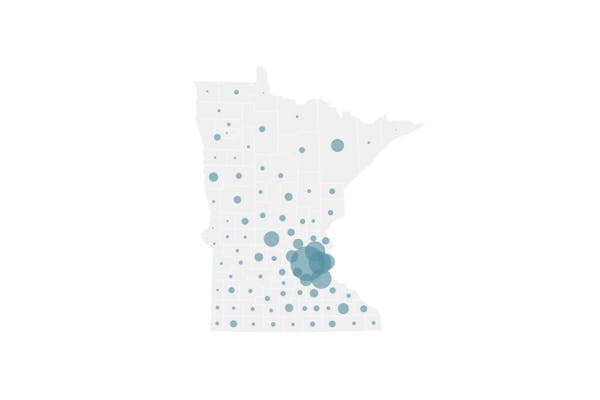Minnesota's health commissioner won't seek to require COVID-19 vaccination for school attendance, even if federal authorities add it to the recommended pediatric immunization schedule.
A statement Thursday by the Minnesota Department of Health clarified the state's position, following last week's vote by the federal Advisory Committee on Immunization Practices to add COVID-19 vaccine to the schedule. While the U.S. Centers for Disease Control and Prevention has yet to sign off on the recommendation, several states had already announced their intentions.
"There are no plans (to) pursue this requirement," said the written statement, provided by Health Department spokesman Garry Bowman.
COVID-19 levels have remained relatively stable in Minnesota so far this fall, although there was a modest increase in infections in mid-September that could have been linked to increased viral transmission during the Minnesota State Fair, Labor Day weekend or the start of the K-12 school year.
Infections have been declining from 1,500 per day in early August to less than 800 per day now — despite the September blip. The totals only account for positive tests at clinics and testing centers; at-home results are not included.
The 525 COVID-19 hospitalizations in Minnesota on Tuesday represented the first total above 500 since mid-August, though, according to the state's pandemic situation report. COVID-19 deaths also rose from four per day in mid-September to six per day in mid-October. That rate is well below the peak this year of 33 deaths per day in late January, however.
In the absence of a school-based mandate, parents should reach out to trusted medical providers to talk through the current risks of COVID-19 for their children and their decisions on vaccination, said Dr. Gigi Chawla, chief of general pediatrics at Children's Minnesota.
"High vaccination rates would help us prevent new variants from developing and breaking through," she said. "This can only be done if everyone who can gets vaccinated."
Minnesota requires proof of several federally recommended vaccinations, or written conscientious objections from parents, before children can attend most preschools or K-12 schools. Shots against measles, tetanus and other infectious agents are required, but the state's immunization law only recommends other vaccinations on the federal schedule for influenza, rotavirus and HPV.
Any changes sought by state Health Commissioner Jan Malcolm would require a lengthy notification process spelled out under state law. In addition to consulting state K-12 and college education leaders, she would be required to notify vaccine-hesitant groups such as Vaccine Awareness Minnesota and the Minnesota Natural Health Coalition.
State Senate and House committees with health care policy roles would have the opportunity to schedule public hearings — meaning that any change in vaccination policy would likely take months.
Seniors remain at greatest risk of severe consequences from COVID-19, making up 87 of the 97 COVID-19 deaths identified so far in October in Minnesota.
Children have been at equal or greater risk of infection because of their higher activity levels that carry the risk of viral transmission. The CDC earlier this fall estimated that 88% of Minnesotans 17 and younger have already been infected. However, their risks of severe illness are lower. Among 13,453 COVID-19 deaths in Minnesota, 11 have involved people 17 or younger — most of whom had chronic or underlying health conditions.
Even in this lower-risk group, vaccine offers some protection, according to Minnesota's latest COVID-19 case data by immunization status. During the last 60 days, unvaccinated children ages 5 to 11 have been 2.6 times more likely to be hospitalized with COVID-19 than fully vaccinated children in that age group.
Among children 5 to 11, 41% are fully vaccinated and less than 1% are up to date. New boosters formulated against the dominant strains of the coronavirus were only approved this month for this age group.
Hesitancy over COVID-19 vaccine appears to have carried over into other recommended pediatric immunizations. The share of Minnesota toddlers who received seven recommended vaccinations declined from 70% in 2020 to 63% in 2020, according to the state Health Department.
Some of the decline was due to access during the first, severe waves of the pandemic, but hesitancy also played a role, Chawla said: "We need to do a better job of hearing what is driving this hesitancy (and) then addressing concerns."
New Minnesota GOP leaders seek peace with party's anti-establishment wing

Who is Republican Lisa Demuth, Minnesota's first House speaker of color?

Minnesota House GOP, Secretary of State Steve Simon return to Supreme Court
Supreme Court sides with DFL and Simon, says 68 House members needed for floor action

